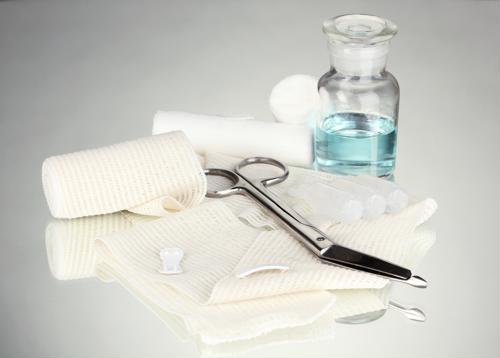If you have diabetes, you know you’re more prone to injury than the average patient. Foot ulcers are especially common for those with diabetes – and can unfortunately lead to hospitalization or infection. In fact, 14 to 24 percent of patients with diabetes who develop a foot ulcer will need an amputation, according to American Podiatric Medical Association.
The reason foot ulcers tend to prey on diabetic patients is because the condition causes reduced circulation in the extremities, often leading to neuropathy. This lack of feeling makes it difficult for diabetic patients to recognize the pain before the sore becomes a severe wound.
The good news is that there are ways to prevent foot ulcers from developing in the first place. Keep these quick tips in mind to protect your feet:
Inspect your feet every day
Get in the habit of checking your feet daily for blisters, cuts, cracks, sores, redness or any other changes in your skin. Ulcers often develop on the ball of the foot or under the big toe, so pay close attention to those areas. Use a hand mirror or have someone help you if you’re having trouble inspecting the bottom of your feet. You should also schedule professional inspections with your doctor or podiatrist at least once a year.
Look out for the trouble signs
During your daily inspections, make sure you’re looking out for signs of trouble. You may not be able to feel the pain, but if you can see something abnormal, it’s worth visiting your doctor for a proper diagnosis and treatment plan. The Mayo Clinic advised contacting your doctor if you notice ingrown toenails, blisters, warts, swelling, redness, skin discoloration or bleeding as these could be early indicators of a foot ulcer.
Give your feet the special treatment
Make sure you’re showing your feet special care and attention to prevent foot ulcers. That includes washing them each day with lukewarm water, careful to dry in between your toes. Your royalty foot care routine should further include:
- Sprinkling talcum powder or cornstarch in between toes to keep them dry.
- Moisturizing your feet to prevent cracking.
- Trimming or filing toenails straight across.
- Wearing diabetic socks to promote blood flow.
- Buying comfortable, proper-fitting shoes.
Manage your diabetes
The better your glucose and cholesterol levels, the less chance you have of developing foot ulcers. As such, proper management of your condition is key for preventing foot ulcers.



